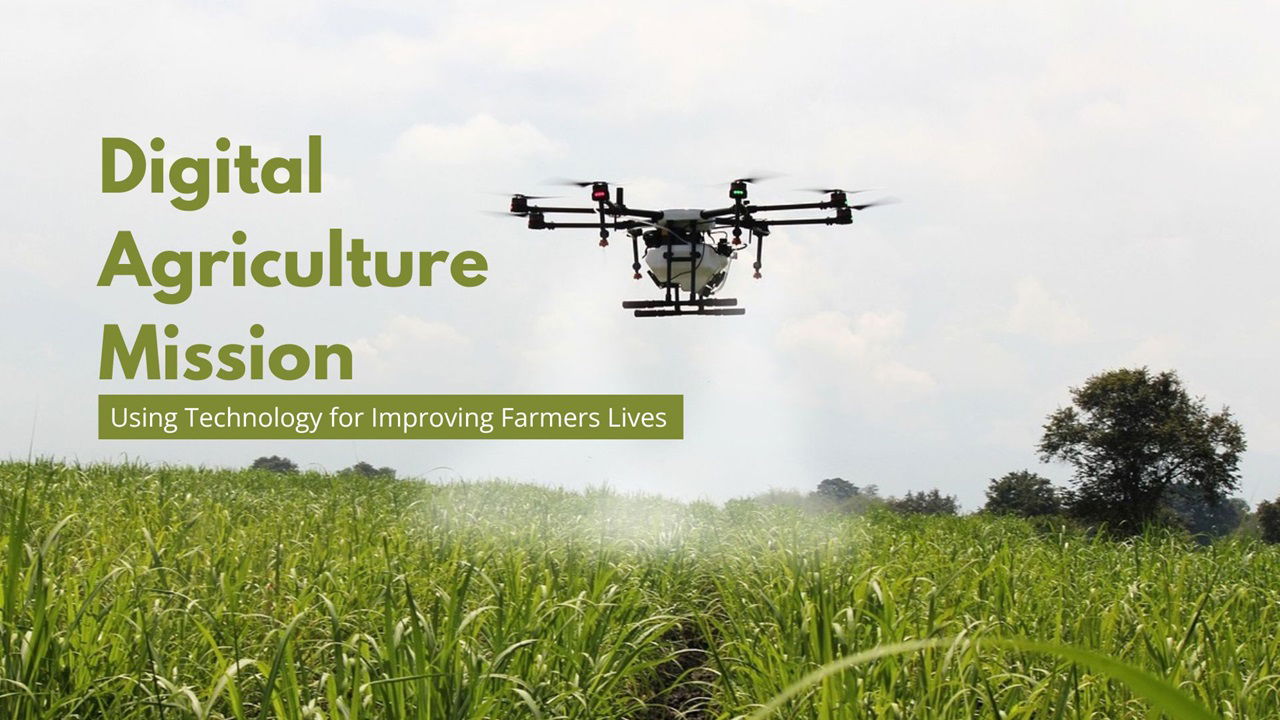
India's digital revolution has reshaped various sectors, improving governance, service delivery, and creating a robust digital ecosystem across domains like finance, healthcare, education, and retail. Following this success, the Indian government has now turned its focus to agriculture with the launch of the Digital Agriculture Mission. Approved by the Union Cabinet on September 2, 2024, and chaired by Prime Minister Narendra Modi, this mission comes with a substantial outlay of ₹2,817 crore, of which ₹1,940 crore is funded by the central government.
The mission aims to accelerate digitalization in agriculture, supporting various initiatives such as the creation of Digital Public Infrastructure (DPI) and the Digital General Crop Estimation Survey (DGCES). It also facilitates IT initiatives by central and state governments, as well as research institutions. The overall objective is to transform India’s agricultural sector by providing farmer-centric services and fostering innovation through data analytics, AI, and remote sensing.
AgriStack: Empowering Farmers with a Digital Identity
One of the foundational pillars of the Digital Agriculture Mission is AgriStack, a farmer-centric DPI designed to streamline services for farmers. AgriStack introduces a unique "Farmer ID," akin to Aadhaar, offering a trusted digital identity that integrates key information like land records, livestock ownership, and crops sown. This system will be instrumental in ensuring that farmers access services efficiently and benefit from government schemes.
The mission is progressing steadily, with 19 states having signed MoUs with the Ministry of Agriculture. Pilot projects have been rolled out in six states—Uttar Pradesh, Gujarat, Maharashtra, Haryana, Punjab, and Tamil Nadu—to test the creation of Farmer IDs and conduct digital crop surveys. The plan includes creating digital identities for 11 crore farmers over the next three years, starting with 6 crore farmers in FY 2024-25.
AgriStack also includes geo-referenced village maps and crop-sown registries, which will provide valuable data for better decision-making and disaster management.
Krishi Decision Support System: Revolutionizing Precision Agriculture
The Krishi Decision Support System (DSS) is another key component of the mission, integrating remote sensing data on crops, soil, weather, and water resources. This system will provide real-time geospatial information to support precision agriculture, helping farmers make data-driven decisions about crop planning, irrigation, pest management, and more.
Farmers can optimize their yields, improve resource management, and reduce costs by leveraging the Krishi DSS. The data collected will also enable the government to offer more tailored support to farmers, ensuring that government schemes and subsidies are targeted effectively.
Soil Profile Mapping: Enhancing Soil Health Management
Soil health is a crucial factor in sustainable agriculture, and the Digital Agriculture Mission has placed a strong emphasis on this aspect through Soil Profile Mapping. The mission aims to map soil profiles on a 1:10,000 scale for around 142 million hectares of agricultural land. So far, 29 million hectares have already been mapped.
This data will enable farmers to better understand their soil’s nutritional requirements, leading to more efficient use of fertilizers and other inputs. In the long run, this will enhance productivity and promote sustainable farming practices.

Digital Public Infrastructure for Agriculture
Union Finance Minister Nirmala Sitharaman announced the rollout of Digital Public Infrastructure (DPI) for agriculture in the Union Budget 2024-25. This initiative aims to provide comprehensive data on farmers, including demographic details, land holdings, and crops sown. By integrating this data with existing state and central digital infrastructures, the DPI will offer a range of farmer-centric services, such as livestock information, soil health, and available benefits.
The digital crop survey, planned for 400 districts in the upcoming Kharif season, will ensure that registries are updated with accurate details on farmers and their lands. This digital transformation will streamline access to services like crop loans, insurance, and real-time advisories, reducing paperwork and physical visits.
Boosting Employment and Economic Growth
The Digital Agriculture Mission is not just about technology; it is also expected to generate substantial employment opportunities. Around 2,50,000 trained local youth and Krishi Sakhis will be employed to support the digital infrastructure and offer assistance to farmers. This workforce will play a crucial role in conducting crop surveys, updating databases, and ensuring the smooth operation of the various digital platforms.
This mission, alongside the additional government schemes for crop science, livestock health, horticulture, and natural resource management, forms a holistic approach to driving agricultural development. Digital Agriculture Mission marks a significant step towards transforming India into a global leader in technology-driven solutions for agriculture, promising a brighter and more prosperous future for the country’s farming community.
-
What is the Digital Agriculture Mission?
It's a government initiative to enhance agriculture through digital technology, including digital identities for farmers and soil mapping.
-
What are AgriStack and its benefits?
AgriStack provides farmers with digital IDs and integrates key data like land records, improving access to services and subsidies.
-
What does the Krishi Decision Support System do?
It offers real-time data on crops, soil, and weather to help farmers make better decisions and improve yields.
-
How will Soil Profile Mapping help farmers?
It provides detailed soil health information to optimize fertilizer use and boost crop productivity.
-
What is the expected impact of the mission?
The mission aims to modernize agriculture, increase efficiency, and generate employment for 2,50,000 individuals.

















